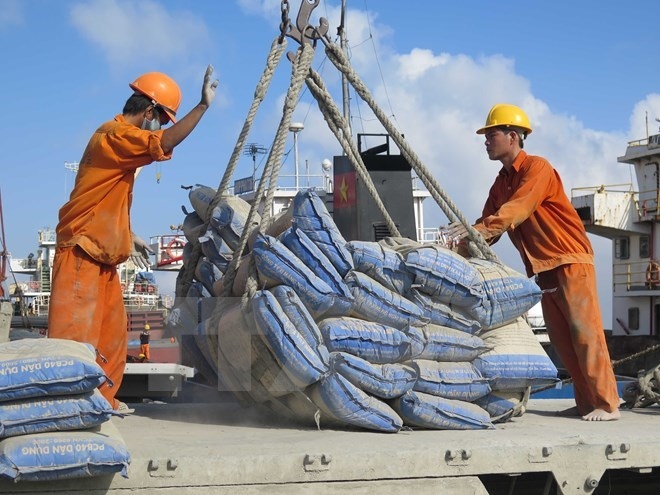Vietnamese cement and clinker exports show drastic upturn
VOV.VN - Vietnam's cement and clinker exports have set a new record as the country exported a total of 32.7 million tonnes worth over US$1.25 billion during the past nine months of the year, according to the latest statistics released by the Ministry of Industry and Trade.
This figure represents a rise of 16.3% in volume and an increase of 20.9% in value against the same period from last year, with the cement and clinker exports remaining the growth engine of the local cement industry in recent times.
August and September witnessed the sector export between 4 million and 4.3 million tonnes of cement and clinker, marking a sharp increase compared to the 3.5 million tonnes in July and the 2.77 million tonnes exported in June.
The country exported roughly 16 million tonnes of cement and clinker worth over US$500 million to China throughout the reviewed period, while exports to the Philippines and Bangladesh hit US$240 million and US$120 million, respectively.
Despite the rise in Chinese imports of clinker helping domestic enterprises to reduce pressure from inventory and sales costs, clinker remains a semi-finished product with a low profit margin, according to Vietcombank Securities Limited Company (VCBS).
Energy experts believe that clinker exports to the Chinese market are anticipated to enjoy robust growth ahead in the remainder of the year due to China facing a serious power shortage, which is likely to cause a production shrinkage of some energy-consuming industries such as steel and cement.
Furthermore, domestic consumption of cement witnessed a decline of 5% over the nine-month period as several southern provinces moved to impose social distancing measures due to the impact of the COVID-19 pandemic.
Nguyen Quang Cung, chairman of the Vietnam National Cement Association (VNCA), said that the latest outbreak of the pandemic has caused a series of construction projects in Hanoi, Ho Chi Minh City, and other southern provinces to suspend construction, thereby leading to a fall in domestic consumption.




